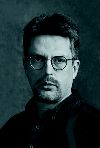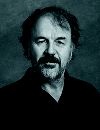
It’s long been recognized that a detailed understanding of how ribosomes are structured is a critical step toward understanding how they carry out their task. However, until now, obtaining this information has been a challenge deemed insurmountable. Although smaller than most viruses, a ribosome is a very large molecular complex, consisting of three RNA and more than 50 protein molecules.
"Obtaining atomic-resolution diffraction data for so large a macromolecular complex can only be done with a high-brightness source of x-rays," says Thomas Earnest, a biophysicist with Berkeley Lab’s Physical Biosciences Division who oversees research activity on the ALS Macromolecular Crystallography Facility (MCF).
|
|||||||||||||||||||||
At the MCF, a 38-pole wiggler magnet specifically extracts x-rays from the ALS synchrotron that range in wavelengths from 0.9 to 4.0 angstroms and in energies from 3.5 to 14 keV (thousand electron volts). Illuminating samples in a focused beam like that from a flashlight, these x-rays are ideal for protein crystallography and the MCF is widely acknowledged as one of the best in the world for this research.
A convincing demonstration of the MCF’s exceptional capabilities came this past year when a team of researchers led by Harry Noller, a molecular biology professor at the Santa Cruz campus of the University of California, resolved the crystal structure of the 70S ribosome of the bacterium Thermus themophilus to 7.8 angstroms. This highly detailed image showed that the two asymmetric subunits (known as 50S and 30S) which make up the bacterial ribosome are spanned by an RNA-protein bridge. Preliminary work indicates this bridge is the basis for communication between the two subunits.
While other research groups have obtained high-resolution images of individual ribosome subunits, Noller and his group, working closely with Earnest, are the first to produce a detailed look at an entire ribosome's complex, a necessary step for determining how ribosome’s function.
From these new 70S ribosome images, Noller says he and his group are seeing how transfer RNA interacts with the ribosome, and how the two ribosomal subunits interact with each other. In both cases, there appear to be complex networks of molecular interactions criss-crossing the ribosome, often involving interactions with a third type of RNA called ribosomal RNA.
"One gets the impression that there are systems of long-range communication connecting distant parts of the ribosome," Noller says. "Our images also suggest very strongly that the ribosome is a machine—and a very complex one with many moving parts. It is also clear that most of the excitement of figuring out the molecular mechanism of translation lies ahead."
The announcement of the new 70S ribosome images made the cover of the September 24 issue of the journal Science last year, which named it one of the top ten scientific breakthroughs of 1999. Coauthoring the scientific paper with Noller, in addition to Earnest, were Jamie Cate and Marat Yusupov, now with MIT, and Gulnara Yusupova of UC Santa Cruz. The valuable experimental results of these researchers served to further enhance the MCF’s growing reputation as one of the world’s premier facilities for protein crystallography. This is expected to increase the already heavy demand for time on the MCF beamlines which even now claim more than a third of all the ALS users.
To meet the anticipated growth in demand, an agreement has been reached with the Howard Hughes Medical Institute, a philanthropy that is one of the world’s leading biomedical research organizations. HHMI will spend $8.05 million for the construction and operation of two new superconducting bend magnet or "superbend" beamlines at the ALS. These and one other superbend will provide high-energy or "hard" x-rays that will make it possible to boost the MCF’s capabilities to as many as a dozen beamlines by the year 2002.
Another plan spearheaded by Earnest to automate every stage of the protein crystallography procedure will also benefit MCF users and substantially boost the facility’s capabilities. Already, the time it takes to collect complete data sets for a single protein crystal has been reduced from what once took months or even years working with laboratory x-ray tubes, to a matter of weeks, days, or even hours.
"Our goal is to minimize the time requirements even further," says Earnest. "You just can’t solve enough crystal structures with the techniques we’ve used in the past." — Lynn Yarris
|
Next > | |||

